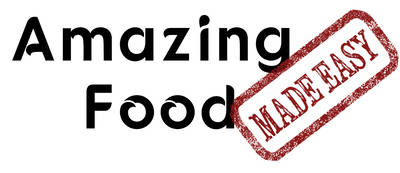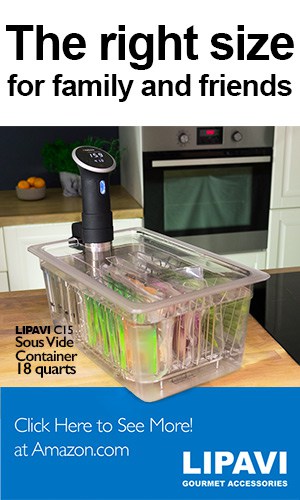-
Sous Vide Time and Temperatures
Sous Vide Time and Temps
Sous Vide Time and Temps
Sous Vide Temps
- All Sous Vide Temperatures
- Sous Vide Beef Temperatures
- Sous Vide Chicken Temperatures
- Sous Vide Duck Temperatures
- Sous Vide Fish Temperatures
- Sous Vide Vegetables Temperatures
- Sous Vide Infusions Temperatures
- Sous Vide Lamb Temperatures
- Sous Vide Pork Temperatures
- Sous Vide Shellfish Temperatures
- Sous Vide Turkey Temperatures
- Recipes Recipes Recipes Recipes
- Getting Started Guides Getting Started Guides Getting Started
- Equipment and Tools Equipment and Tools Equipment Equipment and Tools
- More Resources More Resources Resources More Resources
How to Use Gelatin for Modernist Cooking
More Modernist Ingredients
Click here to get great sous vide content via email
This post may contain affiliate links. Read more.
Written by Jason Logsdon

This isn't just your mother's Jell-o.
Modernist gelling ranges from tender panna cotta and custards to fluffy
marshmallows and gel cubes.
Gelatin is one of the oldest "modernist" ingredients in western cooking. It is used in many childhood favorites from the ubiquitous Jell-O at family picnics to the marshmallows roasted in s'mores. Gelatin can also be used to create foams and a wide variety of gels.
Table of Contents
- What is Gelatin Used For?
- Where to Buy Gelatin?
- What is Gelatin?
- How Do You Add Gelatin to a liquid?
- What is the Difference Between Powdered and Sheet Gelatin?
- How Much Gelatin to Use?
- Converting Between Gelatin Types?
- How to Create a Gelatin Gel?
- How to Make a Gelatin Foam?
- How to Make a Marshmallow with Gelatin?
- How to Make Gel Sheets?
What is Gelatin Used For?Top
Gelatin is a common ingredient in foods because it's so versatile. It can be used as an agent to gel (as in Jell-O), to thicken, to give foods a more pleasing texture, to stabilize foams, and to emulsify or stabilize processed foods.

Gelatin is the basis for jellied desserts and used in the preservation of fruit and meat. It is found in such foods as powdered milk, meringue, taffy, marshmallow, puddings, cake, ice cream, yogurt and fondant. Gelatin is used to clarify juices, vinegars and even beer and wine.
It is commonly used in pharmaceuticals, such as a coating on vitamins or in the formation of capsules. In the photographic industry it is applied on camera film and plate coating. Gelatin is also included in the manufacture of shampoos, cosmetics and dying and tanning supplies.
Where to Buy Gelatin?Top
We often suggest Modernist Pantry's silver gelatin, but they have many other kinds as well. ModernistPantry.com has great service and are really good to work with (because of this, we do have an affiliate relationship with them). We also recommend purchasing gelatin from WillPowder or get larger quantities at ForTheGourmet.com.
Of course, for powdered gelatin you can usually find Knox gelatin in most grocery stores.
What is Gelatin?Top
Gelatin, also referred to as InstaGEL, Gelatina and Vegeta, is a protein substance derived from the collagen found in the bones and skin of animals. If you make a stock at home this is what gives it body and causes it to gel in the refrigerator. It is clear and colorless and when dried it is solid and brittle. When hydrated it forms a flavorless and transparent gel which easily blends into other ingredients.

Depending on the concentration of the gelatin, the melting temperature is between 86°F to 104°F (30°C to 40°C). Since most gelatins have a melting point near body temperature it provides a unique mouthfeel to the food in which it is used.
Special gelatins are made from only certain animals or from fish to meet standards of the Jewish and Muslim religions.
Gelatin's ability to form strong, transparent gels and flexible films that are easily digested, soluble in hot water, and capable of forming a positive binding action have made it a valuable commodity in more than just the food industry.
How Do You Add Gelatin to a liquid?Top
Hydration of Gelatin
All gelatin has to be hydrated or "bloomed" before it can be used. Gelatin commonly comes as a powder or in dry sheets. They are both used in a similar manner but have a few differences when hydrating. To hydrate powdered gelatin you sprinkle it in cold liquid and let it sit for 5 to 10 minutes. Since the gelatin absorbs all the liquid, the quantity should be taken into account when calculating the recipe. Gelatin sheets are also hydrated in a cold liquid for 5 to 10 minutes. However, once they have hydrated you squeeze the liquid out of the sheets and it does not go into the final recipe.

Dispersion of Gelatin
Once the gelatin has been hydrated you disperse it into the liquid you want to gel. This is typically done through whisking, either by hand or with a standing or immersion blender. When dispersing the gelatin make sure the liquid is warm, typically above 122°F (50°C). If you don't want to heat all of the liquid you can dissolve the gelatin in a portion of it and then combine it back into the rest. You can also disperse it in water first and then mix it into the flavored liquid; be aware though, it will dilute the flavors some.
What is the Difference Between Powdered and Sheet Gelatin?Top
Gelatin powder is gelatin that has been dried and broken up into individual grains, which has the advantage if dispersing more easily throughout a dish. It is readily available in your local super market.
Sheet gelatin, also called leaf gelatin, is made from gelatin that is dried in a thin flat piece. The sheets dissolve more slowly than the granulated form, but there is no chance of undissolved granules in the dish. In addition to ease of measuring, most professional chefs use sheet gelatin because it results in a clearer, more transparent final product with a purer taste.
European recipes typically call for the use of leaf gelatin.
How Much Gelatin to Use?Top
It can be confusing when discussing gelatin ratios due to the differences in the bloom strength. All of our ratios are for powdered gelatin with a bloom strength of 225 so it is easier to convert to gelatin sheets. We also give the number of sheets per 100 grams of liquid as well.
How Much Gelatin to Use For Gels
The type of gel created is dependent on how much gelatin you use. For powdered gelatin the ratios often range from 0.5% to 1.0% for soft, tender gels. For very hard, firm gels it can be used in ratios of upwards of 6% but the typical range for firmer gels is 1% to 3%. If you are using sheet gelatin you will use 0.27-0.55 sheets per 100 grams of liquid for soft gels and 0.55 to 1.6 sheets per 100 grams of liquid for firmer gels. For very firm gels more than 3.3 sheets per 100 grams of liquid is sometimes used.
How Much Gelatin to Use For Foams
The density of a gelatin foam will depend on the amount of gelatin used. Once again, all ratios are for powdered gelatin with a bloom strength of 225. For light foams you can use powdered gelatin in a 0.4% to 1.0% ratio. For denser foams using powdered gelatin in a 1.0% to 1.7% ratio is typical. Sometimes you will see even higher ratios. If you are using sheet gelatin you would normally use 0.2 to 0.55 sheets per 100 grams of liquid for light foams or 0.55 to 0.9 sheets per 100 grams of liquid for dense foams.

How Much Gelatin to Use For Marshmallows
Marshmallows are one type of a gelatin sponge. When making marshmallows you typically want an equal weight of water and sugar. The amount of gelatin used will be around 10% of the weight of the water, or 5.5 sheets per 100 grams. Note: See How to Measure Modernist Ingredients for more information on ratios.

Converting Between Gelatin Types?Top
As mentioned previously, there are two main types of gelatin, powdered and sheet. Sheet gelatin also comes in four different strengths: bronze, silver, gold, and platinum. The strength of gelatin is measured by their "bloom strength" and each type of sheet gelatin has different bloom strength. We've listed them, as well as Knox, the most popular brand of powdered gelatin, in the table below with their bloom strength.
| Type | Bloom | Grams / Sheet |
|---|---|---|
| Bronze | 125-155 | 3.3 |
| Silver | 160 | 2.5 |
| Gold | 190-220 | 2.0 |
| Knox Powdered | 225 | - |
| Platinum | 235-265 | 1.7 |
However, because of the difficulty in moving between gelatin types I tend to have both powdered gelatin and sheet gelatin on hand so I can use whatever a specific recipe calls for and save me the effort of converting.
Because the sheets of gelatin are different sizes, they actually contain the same amount of gelling power. So if a recipe calls for "1 sheet of gelatin" you can use any type of sheet.
Powdered gelatin typically comes in 1/4 ounce / 7.2 gram packets of 225 bloom strength. Four sheets of gelatin equal about one packet, so each sheet is around 1.8 grams.
If you are using a recipe that calls for 2% powdered gelatin, you can figure out the number of sheets you need to use for every 100 grams of liquid by dividing the percent by 1.8. However, this only works for small amounts because the math conversion isn't exact and at larger volumes the small differences add up.
For a detailed look at this conversion process I highly recommend reading an article by Daniel R. Moody that explains all facets of how to convert from one type of gelatin to another.
How to Create a Gelatin Gel?Top

Gels are the most common thing gelatin is known for. With the popularization of Jell-O, many people picture gelatin gels as firm, wiggly cubes of fruit juice. While gelatin can make this type of gel there are many more kinds of gels that can be made from it including panna cottas and other soft gels.
Making gelatin gels is a fairly simple process. You first hydrate the gelatin in cold water for 5 to 10 minutes. If using powdered gelatin you hydrate it directly into the liquid that will be going into the recipe for 5 to 10 minutes. If using gelatin sheets you hydrate them in cold water for the same amount of time and then squeeze the water out of them once they are hydrated; this eliminates adding any extra liquid to the recipe. Once the gelatin is hydrated you will disperse it into the liquid it will be gelling. To do this you need to heat the liquid above 122°F (50°C) and whisk or blend the gelatin into it.
After it is dispersed you pour the liquid into a mold and let it cool to set. Placing it in a refrigerator or setting the mold in an ice bath can speed up the process. Once the gel has set in the mold you can turn it out, cut it into shapes, or serve it directly from the mold.
Examples of Gelatin Gel
View more gelatin gel recipes, learn more about gelling techniques in general, or how to measure modernist ingredients for more information on ratios.How to Make a Gelatin Foam?Top
Gelatin can be used to create a variety of foams from light and airy to heavy and dense, all of which will have fine, even bubbles. All gelatin foams must be served cold or they will quickly break down as the gelatin melts.
The process of making a gelatin foam is even easier with the use of a whipping siphon. First hydrate the gelatin and disperse it into the liquid you want to foam. Then pour the mixture into the whipping siphon and refrigerate it for several hours before dispensing.
Examples of Gelatin Foam
 White Chocolate Clouds Gelatin Foam Recipe
White Chocolate Clouds Gelatin Foam Recipe  Foamed Fruit Cosmos Recipe
Foamed Fruit Cosmos Recipe  Paloma Recipe with Grapefruit Foam
Paloma Recipe with Grapefruit Foam
How to Make a Marshmallow with Gelatin?Top

Many people love gelatin sponges, one fun type comes in the form of marshmallows. Making marshmallows is surprisingly easy as long as you have a standing mixer with a whisk attachment. There are two components to a marshmallow, the gelatin and water mixture, and the candy syrup. You start by combining gelatin and either water or a flavored liquid in the bowl of the standing mixer and let the gelatin bloom for 5 to 10 minutes.
While the gelatin is blooming you make the candy syrup by combining sugar, water, and corn syrup in a pot and heating it to 230°F to 240°F (110°C to 116°C). Combine the syrup with the gelatin mixture and whisk on high speed for 8 to 15 minutes until the mixture triples in height. At that point you pour it into a mold and let it cool and set at room temperature for several hours, or even overnight before cutting it into whatever shapes you prefer.
You can change the texture of the marshmallows by beating them for a longer or shorter amount of time or adding other ingredients like agar or egg whites. You can also flavor them by adding extracts like vanilla or maple near the end of the whipping process or replacing the water in the bowl with a flavored liquid like brewed tea, or fruit juices and purees.
Examples of Marshmallows with Gelatin
 Cherry-Chocolate Marshmallows Recipe
Cherry-Chocolate Marshmallows Recipe  Mom's Sweet Potato Casserole Bites
Mom's Sweet Potato Casserole Bites  Chocolate Covered Mint Marshmallows
Chocolate Covered Mint Marshmallows
How to Make Gelatin Sheets?Top

Gel sheets are thin sheets of gel, similar in thickness to a flour tortilla but made entirely of a gelled liquid. There are many ingredient combinations you can use for gel sheets but I usually use a 0.9% agar and 0.1% locust bean gum mixture or a 1.2% agar and 1.4% gelatin combination. Both of these result in good gel sheets.
The gel sheets are made by adding the gelling ingredients to a liquid and hydrating them then pouring the liquid onto parchment paper or a silicon mat in a very thin layer. Once the gel fully sets the sheet can be used.
Gel sheets can be used as a garnish or topper for dishes or cut into rounds and used like ravioli.
Examples of Gelatin Sheets
View more gelatin sheet recipes, gelling techniques in general, or how to measure modernist ingredients for more information on ratios.Looking for More Articles?Top
- Gelatin Articles
- All Modernist Ingredients
- All Modernist Techniques
- My Modernist Recipes
- My Most Popular Articles
Gelatin Recipes and Articles
Blackcurrant Foam
 This thicker blackcurrant foam recipe is full of flavor. It can be used on desserts to add some sweet and tart flavor or as a sauce to liven up a fish entree.
This thicker blackcurrant foam recipe is full of flavor. It can be used on desserts to add some sweet and tart flavor or as a sauce to liven up a fish entree.
Mom's Sweet Potato Casserole Bites
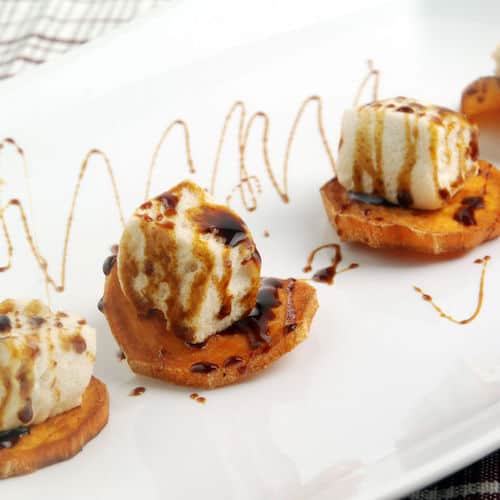 For this dessert I've taken the components from my mom's sweet potato casserole and broken them down into a modernist dessert. I take crispy sweet potato chips and top them with a fresh orange and brown sugar marshmallow. Then I finish it with a drizzle of molasses for extra flavor.
For this dessert I've taken the components from my mom's sweet potato casserole and broken them down into a modernist dessert. I take crispy sweet potato chips and top them with a fresh orange and brown sugar marshmallow. Then I finish it with a drizzle of molasses for extra flavor.
Chocolate Covered Mint Marshmallows
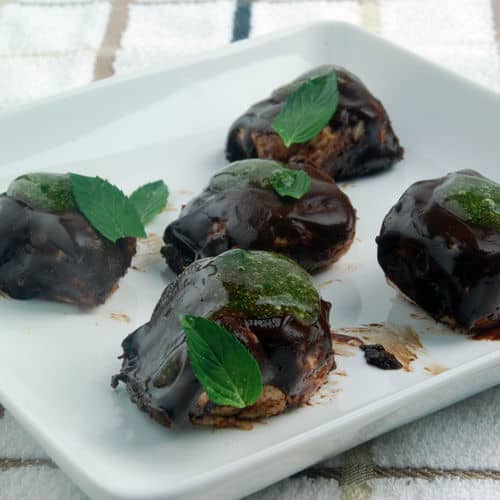 This recipe takes classic homemade marshmallows and covers them in yummy chocolate. Mint and chocolate is a classic pairing and the soft marshmallows are a great way to hold them all together! A definite party favorite!
This recipe takes classic homemade marshmallows and covers them in yummy chocolate. Mint and chocolate is a classic pairing and the soft marshmallows are a great way to hold them all together! A definite party favorite!
Margarita Gel
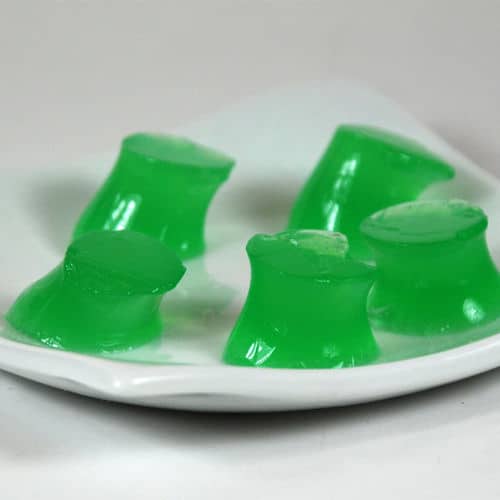 This is a tastier take on the commonly served Jell-O shot
especially if you top them with some candied lime peel
and a little sprig of mint. You can even substitute any of your favorite drinks into this recipe - let your imagination run wild!
This is a tastier take on the commonly served Jell-O shot
especially if you top them with some candied lime peel
and a little sprig of mint. You can even substitute any of your favorite drinks into this recipe - let your imagination run wild!
Chocolate Foam
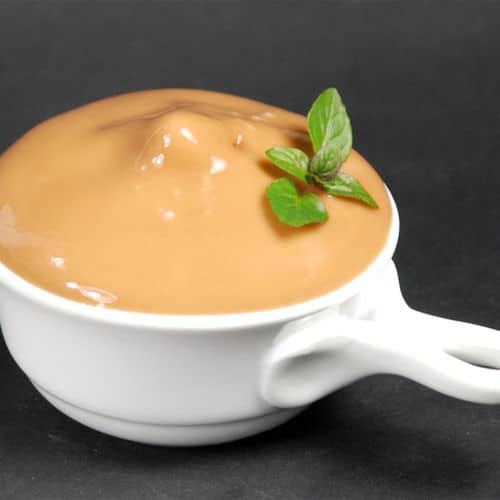 This recipe produces a thick chocolate foam that is a tasty fun way to top ice cream or brownies. It makes a wonderful smooth dessert when served by itself with just a sprinkle of cinnamon and powdered sugar topping it off!
This recipe produces a thick chocolate foam that is a tasty fun way to top ice cream or brownies. It makes a wonderful smooth dessert when served by itself with just a sprinkle of cinnamon and powdered sugar topping it off!
Cherry-Chocolate Marshmallows Recipe
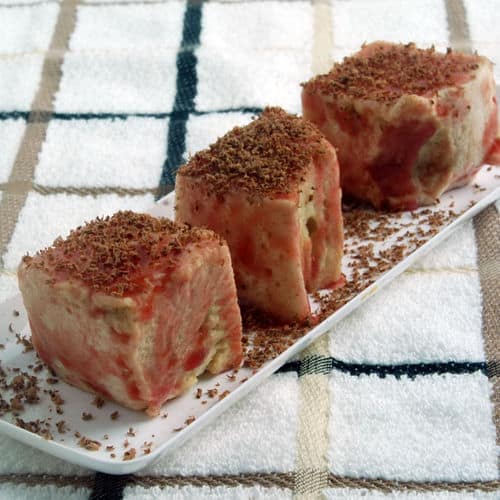 Using a marshmallow base turns a rich, decadent chocolate covered cherry into a lighter equally satisfying treat. I add cocoa powder to the marshmallow mixture, resulting in a light chocolate flavor and cherry juice is turned into a marshmallow coating. These addictive snacks have great flavor and are a visually interesting dish that will get your guests talking!
Using a marshmallow base turns a rich, decadent chocolate covered cherry into a lighter equally satisfying treat. I add cocoa powder to the marshmallow mixture, resulting in a light chocolate flavor and cherry juice is turned into a marshmallow coating. These addictive snacks have great flavor and are a visually interesting dish that will get your guests talking!
Mussels with Curry Foam Recipe
 For this recipe I make a foam instead of using the normally thin liquid associated with a dish of mussels. After removing the mussels from their shells, I serve them individually with the curry foam on top. This exceptional mussel bite turns a messy meal into an elegant and easy to eat party food.
For this recipe I make a foam instead of using the normally thin liquid associated with a dish of mussels. After removing the mussels from their shells, I serve them individually with the curry foam on top. This exceptional mussel bite turns a messy meal into an elegant and easy to eat party food.
White Chocolate Clouds Gelatin Foam Recipe
 White chocolate foam dispensed over ripe berries, it does not get much better than that! This recipe will wow your guests.
White chocolate foam dispensed over ripe berries, it does not get much better than that! This recipe will wow your guests.
Foamed Fruit Cosmos Recipe
 Cosmos are becoming a more and more popular drink and I mix it up by making different flavors of cosmo and by adding some flair in the form of a fruit gelatin foam from a whipping siphon.
Cosmos are becoming a more and more popular drink and I mix it up by making different flavors of cosmo and by adding some flair in the form of a fruit gelatin foam from a whipping siphon.
Creamsicle with Sous Vide Infused Orange-Vanilla Vodka Recipe
 Using sous vide infused vanilla-orange vodka makes this modernist cocktail extra flavorful and the half and half adds a richness that cannot be beat.
Using sous vide infused vanilla-orange vodka makes this modernist cocktail extra flavorful and the half and half adds a richness that cannot be beat.
Paloma Recipe with Grapefruit Foam
 Tequila has a bad reputation as a party drink but you can tame it if you replace the shots with this sophisticated cocktail. The paloma is a traditional Mexican cocktail and is much more common than a margarita south of the border. It is usually made with tequila and a grapefruit soda, such as squirt, served over ice, and is both easy to make and delicious.
Tequila has a bad reputation as a party drink but you can tame it if you replace the shots with this sophisticated cocktail. The paloma is a traditional Mexican cocktail and is much more common than a margarita south of the border. It is usually made with tequila and a grapefruit soda, such as squirt, served over ice, and is both easy to make and delicious.
Orange-Ginger Gel Sheets
 One interesting use of modernist gelling is to create pliable gel sheets. These gel sheets are made by adding a combination of agar agar and gelatin to a flavored liquid and letting it set. The agar and gelatin add both elasticity for strength and a nice brittleness for flavor release. The ratio of the two ingredient will determine the final characteristic of the gel sheets.
One interesting use of modernist gelling is to create pliable gel sheets. These gel sheets are made by adding a combination of agar agar and gelatin to a flavored liquid and letting it set. The agar and gelatin add both elasticity for strength and a nice brittleness for flavor release. The ratio of the two ingredient will determine the final characteristic of the gel sheets.
Classic Gelatin Marshmallows
 Marshmallows are a favorite food of children everywhere. These homemade ones are so much better than store bought that there is really no comparison. Whether you want to eat these on smores, in hot cocoa or just plain they will amaze you and your friends.
Marshmallows are a favorite food of children everywhere. These homemade ones are so much better than store bought that there is really no comparison. Whether you want to eat these on smores, in hot cocoa or just plain they will amaze you and your friends.
Sous Vide Lemon Curd
 Although you can now buy lemon curd in most supermarkets, it is extremely simple to make in your water oven, and the homemade version doesn't contain any preservatives or artificial flavors. Traditional recipes require cooking the lemon-egg mixture in a double boiler until the curd thickens. This can be tricky, as one or two degrees can make the difference between success and disaster. With the sous vide technique, the curd cooks itself without any stress or stirring.
Although you can now buy lemon curd in most supermarkets, it is extremely simple to make in your water oven, and the homemade version doesn't contain any preservatives or artificial flavors. Traditional recipes require cooking the lemon-egg mixture in a double boiler until the curd thickens. This can be tricky, as one or two degrees can make the difference between success and disaster. With the sous vide technique, the curd cooks itself without any stress or stirring.
 This article is by me, Jason Logsdon. I'm an adventurous home cook and professional blogger who loves to try new things, especially when it comes to cooking. I've explored everything from sous vide and whipping siphons to pressure cookers and blow torches; created foams, gels and spheres; made barrel aged cocktails and brewed beer. I have also written 10 cookbooks on modernist cooking and sous vide and I run the AmazingFoodMadeEasy.com website.
This article is by me, Jason Logsdon. I'm an adventurous home cook and professional blogger who loves to try new things, especially when it comes to cooking. I've explored everything from sous vide and whipping siphons to pressure cookers and blow torches; created foams, gels and spheres; made barrel aged cocktails and brewed beer. I have also written 10 cookbooks on modernist cooking and sous vide and I run the AmazingFoodMadeEasy.com website.
Affiliate Disclaimer: Some links on this site might be affiliate links that if used to purchased products I might receive money. I like money but I will not endorse something I don't believe in. Please feel free to directly go to any products I link to and bypass the referral link if you feel uncomfortable with me receiving funds.
